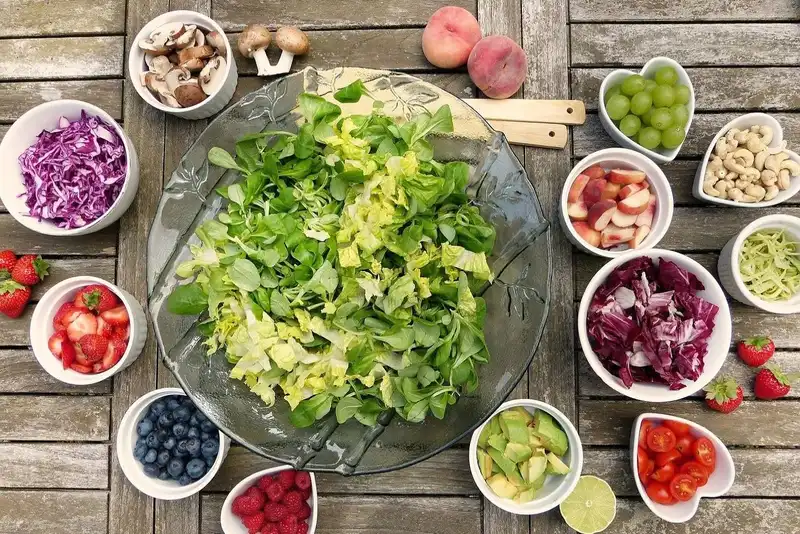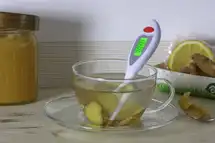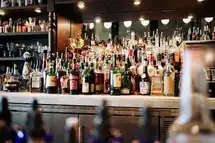What are food safety guidelines?
Food safety guidelines are designed to protect consumers from the risk of foodborne illness. The guidelines are based on the best available science and aim to reduce the risk of foodborne illness by ensuring that food is safe to eat.
Food Safety Guidelines for Delivery Services - How to Keep Your Food Safe on the Go
What are Food Safety Guidelines?
The United States Food and Drug Administration (FDA) has formulated a set of guidelines for food safety. These food safety guidelines cover all aspects of food production and food handling, right from farming and processing, to transportation, and distribution. These norms have been designed to protect citizens from harmful bacteria, viruses, chemicals, and other contaminants that may be present in food. The goal of these food safety guidelines is to prevent foodborne illnesses among people.
There are four key steps to maintaining food safety in the restaurant business -- clean, separate, cook, and chill. The FDA advises cooks and kitchen staff to clean their hands and cooking surfaces with hot water and soap before they start to work with food. They should prevent raw meats from contaminating other foods by separating the two, and by storing cooked food at the right temperature. These practices will ensure that harmful bacteria are prevented from spreading through food or human contact and infecting consumers. And the last step is to refrigerate perishable foods promptly. By following these simple food safety guidelines, you can help protect your staff and your customers from getting ill from contaminated food.
Why is Food Safety Important?

According to the Centers for Disease Control and Prevention (CDC), over 48 million people fall sick, 128,000 are hospitalized while another 3,000 die from foodborne illnesses each year in the United States. This takes a huge toll on the country's healthcare system. Safe food can reduce much of this burden. Let us take a look at the reasons why food safety is paramount-
- Food safety helps avoid foodborne diseases. The right food handling practices at restaurants and food service businesses make sure public health isn't compromised.
- From healthcare expenses to absence from work, foodborne diseases cost individuals, businesses, and the government money. Moreover, restaurants that are implicated in food safety cases are bound to pay out penalties and consumer compensation.
- Unhygienic food and lack of food safety protocols may lead to bad publicity and loss of any good reputation a business may have developed over the years.
- Food safety-related problems can also set back a restaurant's growth by several years, undercutting its customer base and revenue.
- Food safety concerns will also invite law enforcement agencies such as the FDA to come knocking at your door, which is never good news. Not only will this invite huge penalties, but your food license and other permits may be revoked too.
Food can spoil or become contaminated during delivery.
Make sure to check food temperatures and avoid cross-contamination.
How Can Food Safety be at Risk During Delivery?

Maintaining the right Food Temperature is a pertinent concern for online ordering and food delivery services. If pre-cooked food is not properly stored or refrigerated during transport, it can spoil and become unsafe to eat. In the case of hot food items, it is even more important to make sure it doesn't stay exposed to room temperature for too long. Bacteria grow quickly in warm temperatures, so it is important to keep hot foods hot and cold foods cold.
Cold food such as ice-cream or cold coffee need to be packed with ice and carried in cooling bags during delivery. If left exposed to room temperature for too long, these will become warm and may spoil. In case of hot foods, make sure you pack them in airtight containers that will arrest the heat for a while. Also, ensure that the food is delivered within two hours, which is the maximum it can stay exposed to room temperature after cooking.
If you are a restaurant or commercial kitchen delivering food to your customers, be sure to abide by all food safety procedures for delivery. You may also want to check with the local public health department for information about compliance rules and detailed food safety regulations to steer clear of trouble.
Food Safety Guidelines For Kitchens That Deliver
If you run a food business that offers Online Ordering and food delivery services, here are a couple of guidelines you can practice to maintain food safety.
- When cooking food such as raw meat and poultry items, make sure you hit the required minimum temperature to rid the food of harmful bacteria and other pathogens.
- Make sure the containers, packaging bags, and other material you use are fit to carry food.
- In case of cold foods, use insulated packaging, dry ice or frozen gel packets to keep the food cold during transit. Use food labels if you need to communicate messages regarding storage and food handling to your customers.
- Try to deliver food below the 40 F temperature mark to make sure there is no chance of food poisoning or bacterial growth.
- Do not keep cooked food at room temperature for more than two hours before delivery. Try to deliver the food as soon as it is cooked, in food-grade, airtight containers.
How To Control Temperature for Safe Food Delivery

A crucial part of a successful and efficient Online Food ordering and delivery service is its ability to maintain proper temperatures throughout the production and delivery processes. Here are some safe food handling practices to follow for delivery-
- For most perishable food items, the maximum cold-holding temperature is 41 degrees F, which limits harmful bacterial growth during storage and transit. For hot foods, the minimum recommended temperature for storage and transit is 135 F.
- Identify the temperature control requirements of each food item you deliver, evaluate its unique needs, and take necessary precautionary measures accordingly.
- Try to limit the maximum delivery time for your food so that you minimize its exposure to room temperature and limit the chance of bacterial growth.
- If possible, deliver your food as soon as it is cooked. The longer it sits out, the more likely it is to become unsafe to eat.
With the rise in online ordering, restaurateurs have to take extra efforts to maintain food safety during delivery.
This article helps you maintain food safety, so your customer's health and your reputation are safeguarded.
Food Safety FAQs

Q1. How to prevent cross contamination?
A- When handling food, you must always be wary of chances of cross contamination between food items such as raw meat and fruits and vegetables. Just like you'd use different cutting boards for these items when cooking, use different containers and packaging to deliver them once cooked. The outer containers must be airtight and strong enough to hold the items in place without causing them to spill over into other boxes or packets. Following sanitary methods to pack food will prevent contamination.
Q2- What are some of the best practices for a food delivery system?
A- In addition to controlling cooking and storage temperature and maintaining sanitary cooking and delivery conditions, it's important to monitor food safety procedures. You need to verify and make sure all your food safety processes are followed diligently and that your system is compliant with standard food safety guidelines.
Remember to communicate with your customer about the cooking, storage, transportation and other food safety measures you have adopted, and inform them about the steps they need to take before consuming the food. This will rule out any scope for food poisoning. Also, hold your staff accountable for the production, transportation, and monitoring of your delivered food. This will make them vigilant and more likely to follow your food safety protocols.
Final Word
As you can see, there are many different aspects to food safety. By following a few simple guidelines, you can keep your food safe from contaminants. Here's a quick overview of the rules- be sure to wash your hands thoroughly when handling food, cook meat and poultry thoroughly, avoid cross contamination by keeping raw and cooked foods separate, and clean all surfaces and utensils that come into contact with food. When in doubt, throw it out, should be your mantra. If food looks or smells spoiled, don't take a chance, simply discard it. These precautions will help you reduce the risk of serving contaminated food and risking public health.
You've tied up with a third-party food delivery platform, but you’re worried about their food safety measures.
It pays to know what to expect when it comes to safe food delivery standards. This article will enlighten you.














































































































